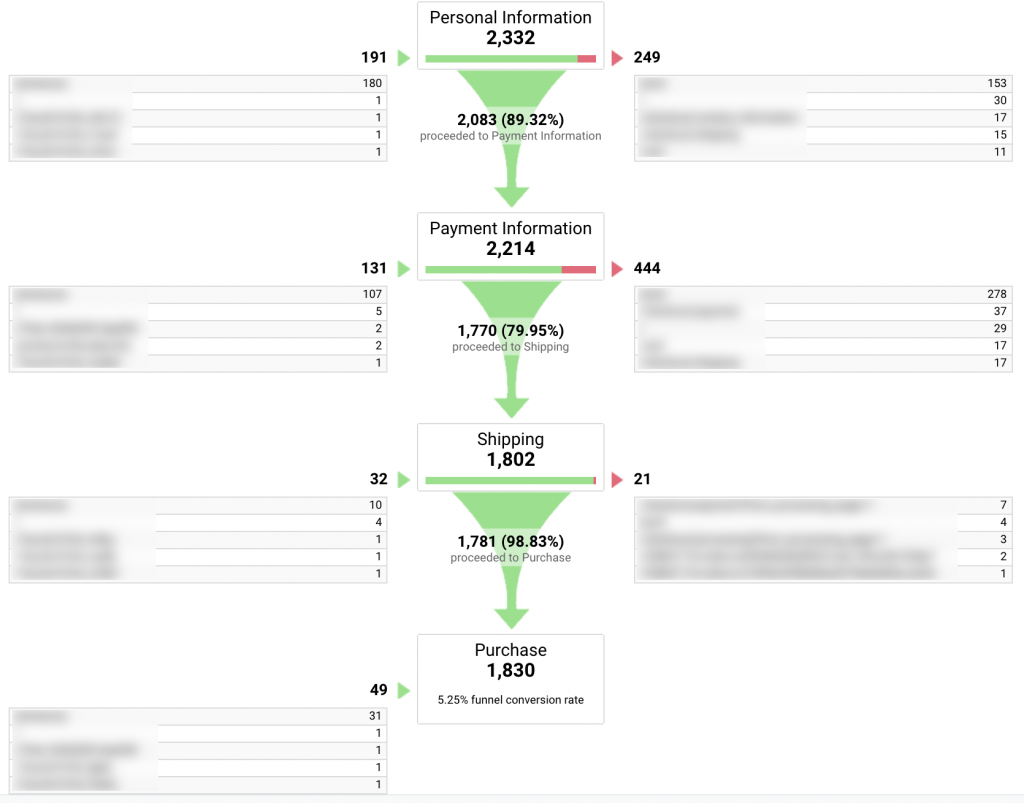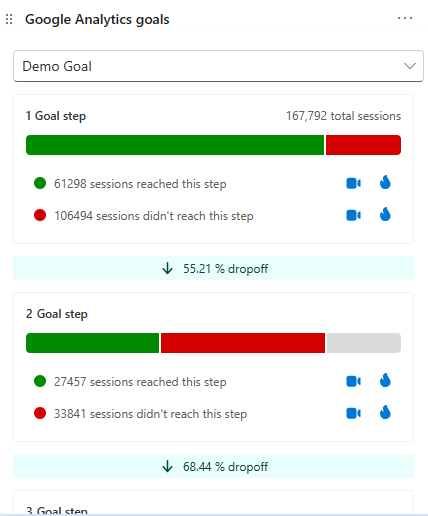Key Insights on What Data Is Google Analytics Goals Unable to Track
Discover the Limitations of Google Analytics Goals: Unveiling the Information Kind That Remain Untrackable
As companies progressively rely upon data-driven decision-making, recognizing the limitations of devices like Google Analytics becomes critical. While Google Analytics Goals offer useful understandings right into customer communications, there exist data kinds that elude tracking, positioning difficulties to an extensive understanding of customer behavior. These untrackable data kinds elevate questions concerning the accuracy and completeness of the analytics data that organizations greatly rely upon for their electronic approaches. Interested to uncover the concealed blind spots in your data analysis procedure?
Insufficient Individual Journey Tracking
Insufficient customer journey monitoring within Google Analytics can prevent the capacity to properly analyze customer habits. When the user trip is not totally tracked, there are gaps in the data that avoid a comprehensive understanding of exactly how individuals connect with a website. This absence of insight can result in missed out on chances for optimization and enhancements to the customer experience.
One common concern with insufficient customer trip tracking is the failure to see the complete course that users take in the past finishing a goal or leaving the website. Without this info, it is challenging to determine where users might be experiencing challenges or rubbing points that prevent them from transforming. Furthermore, incomplete tracking can obscure the impact of particular advertising and marketing initiatives or web site adjustments on user actions.
To resolve this limitation, it is essential to set up proper monitoring systems within Google Analytics to catch the whole customer trip. This may include setting up event monitoring, goal funnels, or using devices like Google Tag Supervisor to guarantee that no important communications go unrecorded. By getting a thorough sight of the user journey, site owners can make more enlightened choices to improve individual engagement and drive conversions.
Acknowledgment Difficulties
Browsing through acknowledgment difficulties in Google Analytics calls for a comprehensive understanding of how different touchpoints add to the general conversion process. Acknowledgment obstacles arise from the intricacy of modern customer journeys, where customers interact with multiple channels prior to converting. Google Analytics offers numerous attribution models like very first touch, last touch, and straight, each offering a various viewpoint on how debt is designated to touchpoints along the conversion course. These models may not always precisely show the real effect of each touchpoint on the conversion.
One typical attribution obstacle is the difficulty in connecting conversions to the correct source, specifically in instances where individuals communicate with multiple networks before transforming. Furthermore, cross-device monitoring presents another acknowledgment difficulty, as individuals frequently change between devices during their trip, making it testing to track their interactions perfectly.
Offline Conversions
Given the challenges related to connecting conversions precisely in online channels, the dimension of offline conversions offers a substantial opportunity for marketers seeking a much more comprehensive understanding of their clients' journey. Offline conversions refer to activities that consumers take in the real world, such as making purchases in brick-and-mortar shops or over the phone, attending events, or engaging with published products - what data is google analytics goals unable to track. These conversions are important for businesses that operate both online and offline, as they give valuable insights into the efficiency of advertising and marketing campaigns throughout numerous touchpoints
Tracking offline conversions traditionally postured a substantial difficulty for marketing experts, as it was challenging to attach these activities back to particular online interactions accurately. However, with advancements in modern technology, such as the integration of CRM systems, special identifiers, and discount coupon codes, services can currently bridge the space between online and offline information to acquire an extra holistic view of consumer behavior. By properly gauging offline conversions, online marketers can optimize their approaches, allocate resources a lot more successfully, have a peek here and inevitably enhance the general consumer experience.
Cross-Device Monitoring
Cross-device tracking plays an important function in understanding the interconnected nature of customers' digital communications across several devices. In today's omnichannel globe, where individuals perfectly switch over in between desktop computers, tablet computers, and smartphones, tracking their habits throughout these devices is important for marketers to get an extensive sight of their consumer trip.

Moreover, privacy problems and regulations such as GDPR and CCPA have even more difficult cross-device tracking. With customers demanding even more control over their data and raised constraints on monitoring innovations, marketing professionals should discover privacy-compliant and ingenious methods to connect user interactions across devices.
Dynamic Material Involvement
Comprehending user involvement with dynamic material is pivotal in optimizing digital advertising and marketing techniques for boosted target market communication. Dynamic content describes website aspects that change based on customer habits, preferences, or other factors, offering a personalized experience. Tracking user interactions with vibrant web content postures obstacles for typical analytics devices like Google Analytics.
While Google Analytics can track fundamental interactions like clicks and web page sights, it may struggle to record more nuanced engagements within dynamic content. what More Bonuses data is google analytics goals unable to track. Metrics such as time invested on certain vibrant elements, hover activities, or communications within pop-ups are frequently not easily measurable making use of typical monitoring approaches. This limitation prevents marketing professionals' ability to completely grasp exactly how users are involving with dynamic material and tailor their strategies as necessary

Conclusion
Finally, Google Analytics objectives have constraints in tracking insufficient user journeys, connecting conversions properly, catching offline conversions, tracking cross-device communications, and gauging dynamic content involvement. These restrictions highlight the importance of exploring extra tracking methods and tools to acquire an extra thorough understanding of user behavior and conversions beyond what Google Analytics can offer.
While Google Analytics Goals offer important insights right into individual communications, there exist data types that avoid monitoring, posturing challenges to a comprehensive understanding of user habits.Incomplete customer trip tracking within Google Analytics can hinder the ability to accurately evaluate customer actions. When the individual journey is not fully tracked, there are gaps in the information that protect against a comprehensive understanding of just how users connect with a website.One usual problem with incomplete customer journey tracking is the lack of ability to see the full path that users take previously completing a goal or leaving the site. By obtaining a comprehensive view of the customer journey, web site proprietors can make more informed decisions to improve customer involvement and drive conversions.